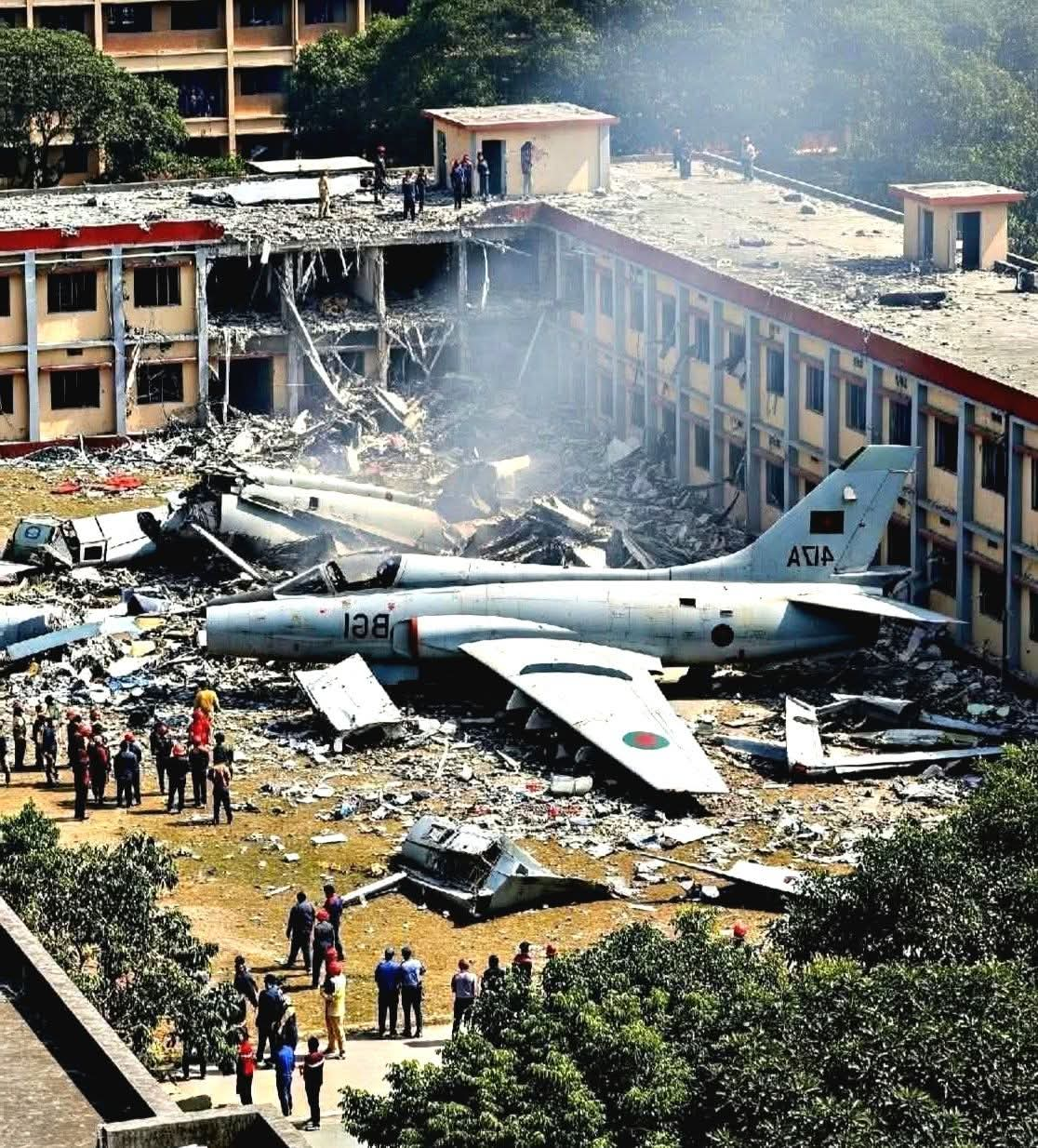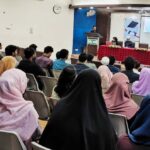
Khwaja Masum Bellah Kausarey: A training aircraft of the Bangladesh Air Force crashed into the two-story building of Milestone School and College in Sector 11, Uttara, Dhaka on 21 July 2025. 1:15 PM. Within moments, a massive fire erupted. At least 31 people lost their lives, including 25 young students who were burnt or crushed to death. Over 170 others were injured (as of the time of writing), most of whom are still fighting for their lives at Dhaka Medical College, Sheikh Hasina Burn Institute, and other nearby hospitals. Some are severely burned; others have sustained damage to their airways and are unable to speak.
The nation is passing through a moment of deep mourning, despair, and uncertainty. Bangladesh has witnessed many disasters, but no one could have imagined that innocent children, sitting safely in their classrooms, would be struck by such a horrific and untimely death.
Tragedy in Numbers: Total fatalities: 31, Student deaths: 25
Others deceased: 6 (including 1 teacher and 1 pilot),Total injured: Over 171, Critical cases in ICU: At least 24, Currently hospitalized: 88
Unanswered Questions: The pressing question is—why was a faulty aircraft flying over a densely populated area? Why was pilot training being conducted over a crowded school? Pilot competence or mechanical failure—everything should indeed be investigated. However, what lies beneath is a deep-seated structural failure—a concept known as structural violence. In times of tragedy, we offer condolences, send aid, and form inquiry commissions—but eventually, everything disappears into bureaucracy and paperwork. But can the parents of the deceased children ever forget this wound? Those whose children’s books and bags have turned into ashes—can their lives ever return to normal? If a state cannot protect lives through its every measure, what kind of nation are we living in, 53 years after independence? Despite regulations requiring training aircraft to be flown outside city limits, this was not followed. Despite inadequate safety measures, the plane was flown over a school. Emergency medical services, firefighting preparedness, and hospital coordination—all appeared only after the disaster occurred. There was a stark lack of preemptive planning. Public ignorance also became an obstacle, as crowds of onlookers hampered rescue operations.
Healthcare Failures: A Mirror of Reality-The government has said that foreign doctors will be brought in. But the real question is: why have we still not developed our own healthcare system to the point where we can handle such emergencies ourselves? If, even in 2025, we are not self-sufficient in responding to a single disaster in Dhaka, how are we marching toward middle-income status?
Reports indicate that among the children in the burn unit, seven remain on ventilation, and at least 17 had to be referred abroad for treatment. There is still no visible comprehensive plan for emergency care, psychological support, or long-term rehabilitation.
The Psychological Toll: More Than Just Physical Wounds-It’s not just about physical healing. Those who witnessed this horror—teachers, rescuers, even fellow students—will suffer from trauma for a long time. Many of the children who survived are now unable to sleep. Some burst into tears just hearing the name of their school. Yet, the government and administration remain negligent about providing psychological services. The question must be asked: Will the state prioritize mental rehabilitation as a core policy issue? Inquiry Commissions: Just a Bureaucratic Routine? After the incident, both the Air Force and the Civil Aviation Authority formed separate inquiry committees. But past experience tells us that the public rarely sees the results of such investigations, and those responsible are almost never punished. What happened to the inquiry reports of the 2019 Mymensingh aircraft crash, the 2021 radar failure, or the recent Cox’s Bazar accident? Will we, this time, finally see accountability? Or will this tragedy too be buried under investigative dust—yet another generation lost without justice?
Shift from Cure to Prevention-We must return to the policy of prevention, not just remedial action. The following steps are imperative: 1.Ban training flights over populated areas: Densely inhabited regions must be declared strict no-fly zones for training aircraft.
2.Enhance emergency healthcare capacity: The number and quality of burn units, children’s hospitals, and ICUs must be urgently increased.
3.Mandatory psychological rehabilitation: Trauma response units and counseling services must be made mandatory after school-based disasters.
4.Make inquiry reports public and enforce accountability: Investigations are meaningless without transparency and consequences.
5.Launch awareness campaigns: The public must be educated through media on how not to obstruct, but assist in rescue operations.
How Many More Deaths Will It Take? Those who have died will never return. But if we do not take proper measures now, the future deaths of more children will be reduced to mere statistics—just numbers in another report.
July 21 was not just the date of an accident. It was a day of state failure in Bangladesh. A day that brutally revealed how a weak and short-sighted administration can destroy the future of a nation.
Now is the time not for tears, but for a loud, united demand for systemic change.
Author: The Executive Director of a Nongovernment Research & Development Organization, Senior journalist, and Human Rights Activist.







